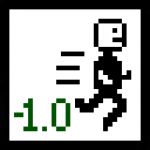Not a member of Pastebin yet?
Sign Up,
it unlocks many cool features!
- So this is my writeup for the Cipher Matchmaker puzzle I made for the 2019 Puzzlers Club Secret Solver. If you haven't seen the puzzle, I highly suggest trying it out here: https://ihnnpuzzles.blogspot.com/2020/01/puzzle-101-cipher-matchmaker.html
- Major solution path spoilers follow.
- Before I even knew who I was assigned, I knew I wanted to try to make a Matchmaker puzzle. Once I was assigned pwahs (whose bio stated a preference for shading/loop puzzles) I focused on shading puzzles exclusively, as those are what I feel I can construct best. I settled on 6 puzzle types to include- Nurikabe and Tapa for "wall", Tasquare and Kurotto for "connected", and Cave and Kurodoko for "sighted". I thought about ways to disambiguate Cave and Kurodoko as I knew that would be the biggest problem, when I had a crazy idea to use P W A H S in a cipher, dropping Kurooko from the list. I thought about that for a day or so before determining that it should be possible to construct, mostly because I hit on the S pattern in the lower right of Puzzle E.
- ----
- ---S
- ----
- -S-S
- Since the cipher explicitly states that all numbers are between 2 and 6, this could not be Nurikabe or Tasquare immediately, and could only be Tapa if S was 2. Then I started making Puzzle C around the following setup:
- ---
- AA-
- ---
- This again removes Nurikabe immediately, and can only be Tapa if A is 2 and Tasquare if A is 4. Duplicating the pattern on the other side removes those, narrowing the puzzle down to Cave or Kurotto. The center of Puzzle C then removes Cave (nothing can be 2 without breaking the puzzle), and so C is Kurotto. In turn, that meant if I could force S=2 in another grid, then I could force Puzzle E to be Cave. Next up was Puzzle B with:
- ====
- --W-
- H--P
- ----
- -?--
- This pattern twice would force W to be 2 if the puzzle was Nurikabe, so by including the pattern again with W replaced with a different letter, then B can not be Nurikabe. Incidentally, it also worked very well with Tasquare, forcing 2, 4 or 5.
- Next, Puzzle A has a minimum clue total of 6*2 + 5*3 + 4*4 + 4*3 + 5*2, or 12 + 15 + 16 + 12 + 10, or 65. If it was Nurikabe, then there would be 35 black cells, which is easily shown to not be sufficient to separate all the givens. Therefore Puzzle D is Nurikabe. Puzzle A also has 2 different givens in corners, and Tasquare can only have a 4 in a corner in the range 2-6. So Puzzle B is Tasquare, but Cave and Tapa are still ambiguous between Puzzles A and E.
- This wasn't the step I tested in construction, however- I placed the 3 edge clues (PSHH) and the givens in columns 3-5 and tested all combinations of low numbers to see if fitting a connected wall was possible: it wasn't. Testing each letter for 6 is another good way to make this step, which I expected would be the case. I wasn't too concerned with exactly how to exclude Nurikabe from Puzzle A beyond knowing I needed to do so.
- Back in Puzzle B, rotating the anti-Nurikabe pattern gave:
- --H-
- ----
- A--P
- -S--
- ====
- If S was 4 or 5, then H, A and P would all have to be 4, 5 or 6. But since that would create a duplicate number, S had to be 2, which then finally placed the final genres by removing Tapa as a possibility from Puzzle E. And so after about half of the construction time, I had finally managed to pin down exactly which grid was which puzzle after what I considered a very slick step. It sounded like this "S=2" step was unavoidable too, which I really liked.
- After this point, I made the Tasquare and Tapa puzzles, using numbers for the letters I could place in later (allowing for more cross-puzzle steps) using them as feeders for the cipher.
- After solving those 2 puzzles, I noticed that I had some strong potential with S as it already had 2 and 4 placed. In the Nurikabe:
- ======
- H-sSs-
- ---s-H
- --H---
- S had a maximum of 4, and so had to be 3. I then picked W to be 4 and 5 in the Tapa and Tasquare, so in the Cave I could add the following in the top left:
- S--W
- ----
- ----
- W---
- S could only be 5 or 6 at this point, and W could only be 2, 3 or 6. Regardless of the value of S, it would reach a W, and so W had to be 4 or greater, which meant 6, resolving the S. Incidentally, making the S 6 in the Kurotto resulted in some very interesting deductions and a way to resolve the majority of the cipher. At that point, I just made the Kurotto and the Nurikabe without issues. The Cave took me quite a while to make unique, however- I kept having one cell in the top right ambiguous before I overhauled the left side to both add more givens and more interesting deductions.
- As an added challenge to myself, I made sure that each grid had a different symmetry- vertical, rotational, horizontal, none, and diagonal.
- All in all, I'd say this turned out very well for my first ever cipher puzzle(s?)
Add Comment
Please, Sign In to add comment

